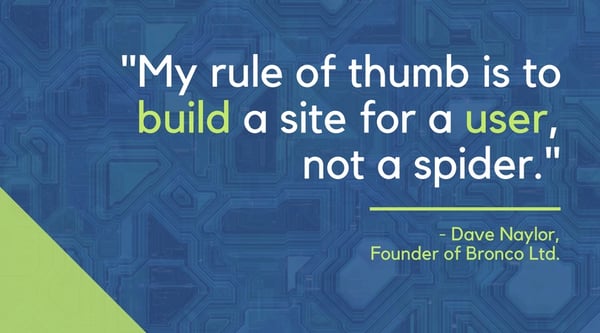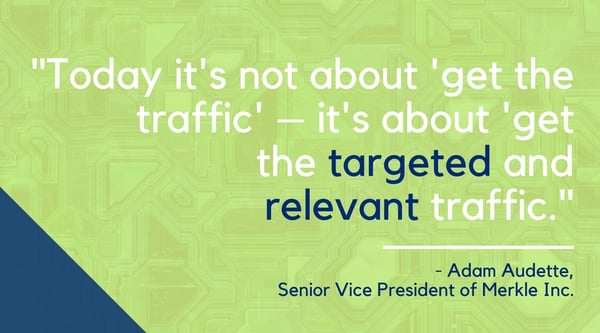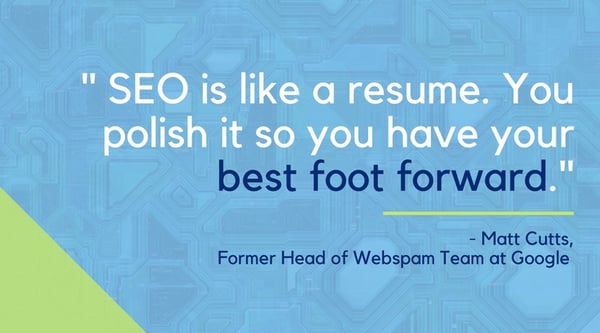You’ve seen it in the news, you’ve read about it in articles and even dabbled with improving your agency’s Google search results – but it’s time to get serious about SEO.
In a normal day, Google processes over 3.5 billion searches.
Let me say that again – 3.5 BILLION. When you break it down, that’s more than 40,000 searches every second. If you want to appear in those searches, you need to focus on SEO.
You’re constantly brainstorming creative ways to get your agency’s information in front of your clients but if you’re not improving your SEO, that information may never be seen.
Your agency needs to stand out against the noise online. Search engine optimization is the practice of improving the quality and quantity of the traffic your website receives. Google sends “spiders” to crawl and evaluate your webpages and to see how high it should be placed in search results, based on their content value. Use these tips to make SEO work for you:
-
Understand the Basics
To improve SEO, you need to first understand why it matters, what it means and what it can do for your agency. Moz.com breaks down the ins and outs in this Beginner’s Guide to SEO. Providing an in-depth explanation of search engines, keywords, helpful tools and more, Moz has developed a great starting place to hit the ground running.
Improving your agency’s SEO can help advance the function of your website, generate more visitors and improve your search rankings. But most importantly – it will make your website more user-friendly and give clients an improved customer experience. At the end of the day, you want your site to be built for your customers and prospects.

-
Research industry hot-topics (a.k.a. keywords)
This is some of the most important research you will conduct when it comes to improving your SEO. Not only will you better understand how to get information in front of your clients and prospects, but you’ll also develop an improved client persona.
To begin your keyword research, start with the basics. Develop an understanding of what your potential clients want to know and what matters to them – these will be the topics the insurance industry is talking about. HubSpot breaks it down by explaining, in detail, what keywords are, why they’re important and how you can learn more about what your clients are searching for.
-
Never stop improving

We get it – you have a lot on your plate. You’re constantly trying to improve your agency and grow your book of business, but SEO needs to be a consistent item on your to-do list. It won’t be something you work on for a while, check off and consider done. It will take continuous effort to improve.
Invest your time in SEO like it’s an asset – because that’s exactly what it is. Think about it like you would think about investing in your home. Let’s say you’re updating a kitchen or a bathroom. These updates increase the value of your home. Improved SEO will improve the value of your website and get you found when someone searches for your agency.
- Quality outweighs quantity
The goal is not to create a TON of new content. Previously, publishing loads of content worked as a great tactic to expand the reach of your material. That’s not the case anymore. Work on improving the quality of your previously created content. Why? Quality outweighs quantity. Repurpose content to make it SEO-friendly.
Wondering how you can refresh your content to appeal to the viral world? A few small changes will repurpose your materials into a breath of fresh SEO-friendly air. Start by deciding which content is worth a second chance, set a style and utilize these tips from BlogPro to get going.

SEO isn’t just for your IT-team or a website expert. You can tackle this task.
We want to hear your story! If improving SEO has made a huge impact for your organization, let us know by commenting below.
DISCLAIMER
The information contained in this blog post is intended for educational purposes only and is not intended to replace expert advice in connection with the topics presented. Glatfelter specifically disclaims any liability for any act or omission by any person or entity in connection with the preparation, use or implementation of plans, principles, concepts or information contained in this publication.
Glatfelter does not make any representation or warranty, expressed or implied, with respect to the results obtained by the use, adherence or implementation of the material contained in this publication. The implementation of the plans, principles, concepts or materials contained in this publication is not a guarantee that you will achieve a certain desired result. It is strongly recommended that you consult with a professional advisor, architect or other expert prior to the implementation of plans, principles, concepts or materials contained in this publication.
This blog post may contain the content of third parties and links to third party websites. Third party content and websites are owned and operated by an independent party over which Glatfelter has no control. Glatfelter makes no representation, warranty, or guarantee as to the accuracy, completeness, timeliness or reliability of any third party content. References to third party services, processes, products, or other information does not constitute or imply any endorsement, sponsorship or recommendation by Glatfelter, unless expressly stated otherwise.
Related posts
When it comes to cybersecurity, the basics can go a long way.
With so much information online—it's comforting to hear from a real person with first-hand experience with a product or service before you make a purchase.
Here are five ways you can build, expand and strengthen your professional network on LinkedIn.








Submit a Comment